#South Asian
Text



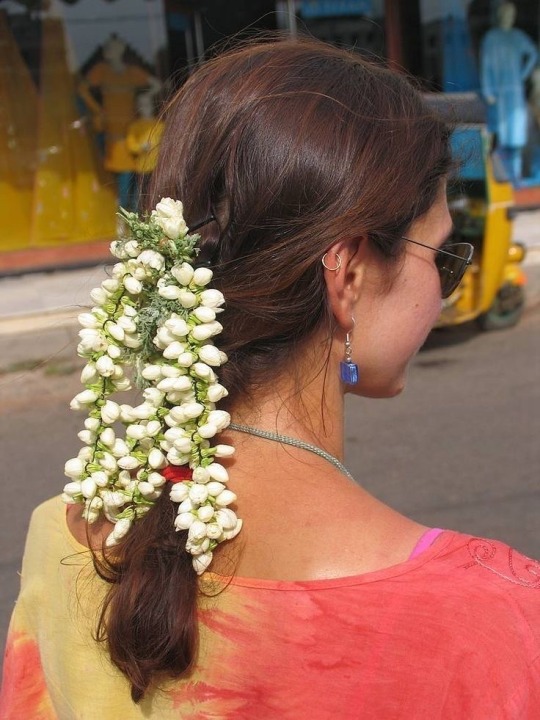

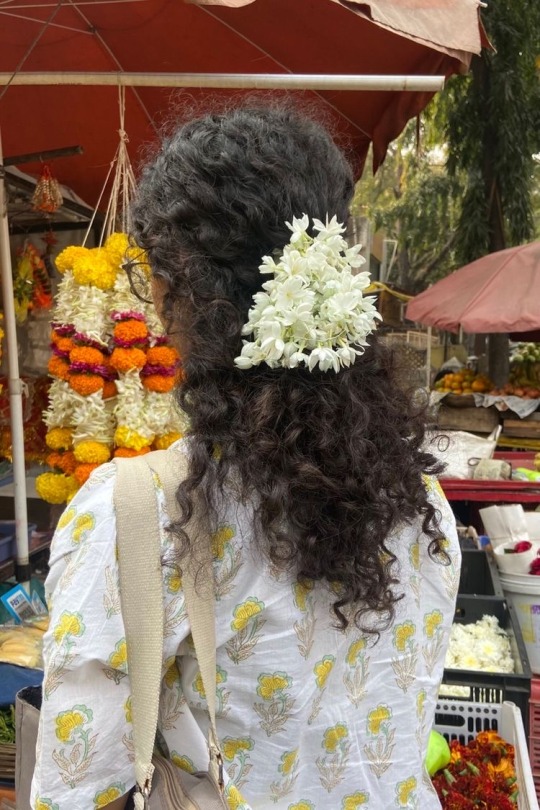
Gajra 🪷
14K notes
·
View notes
Text
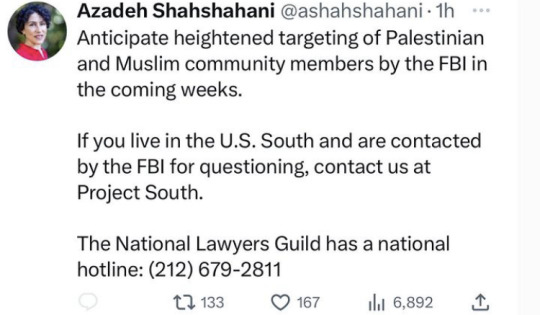
id:
a tweet by azadeh shahshahani (@ashahshahani) that says, "anticipate heightened targeting of palestinian and muslim community members by the fbi in the coming weeks.
if you live in the u.s. south and are contacted by the fbi for questioning, contact us at project south.
the national lawyers guild has a national hotline: (212) 679-2811"
end id.
#palestine#project south#national lawyers guild#muslim#muslim american#mena#south asian#middle east and north africa#middle eastern#north african#sikh#sikhism#american south#us south
6K notes
·
View notes
Text

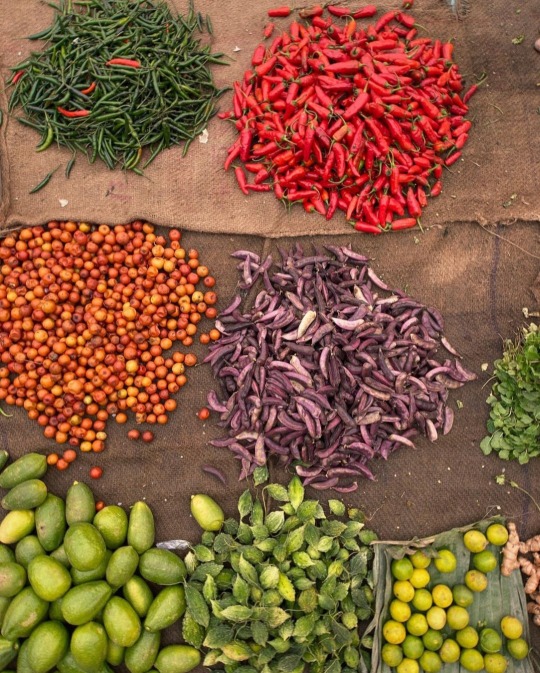

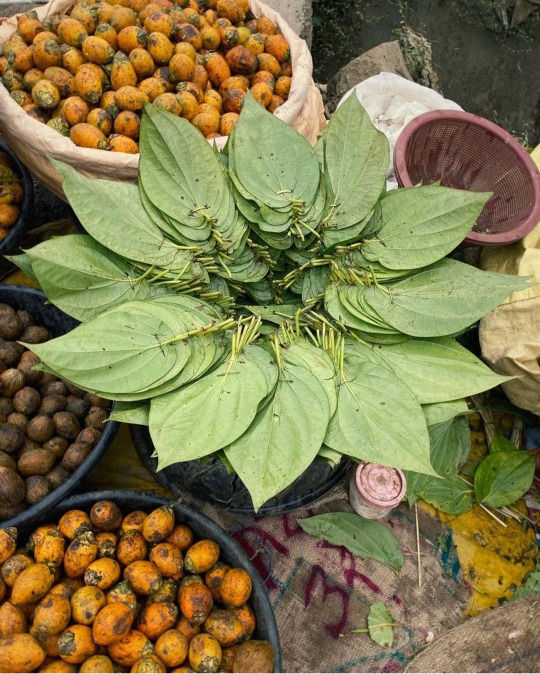
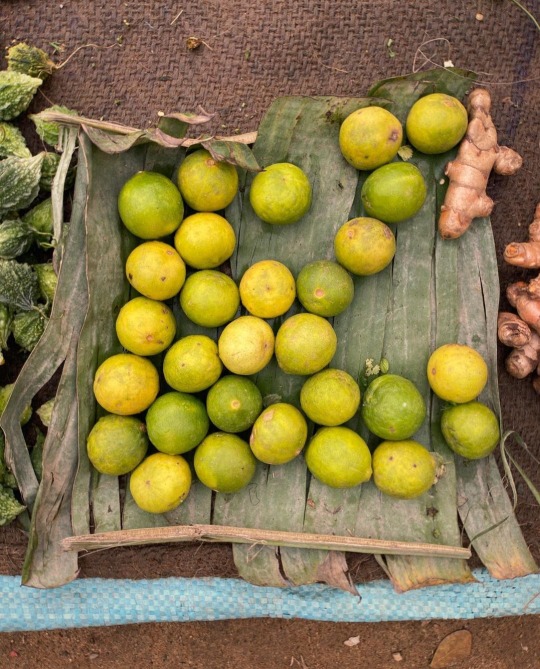


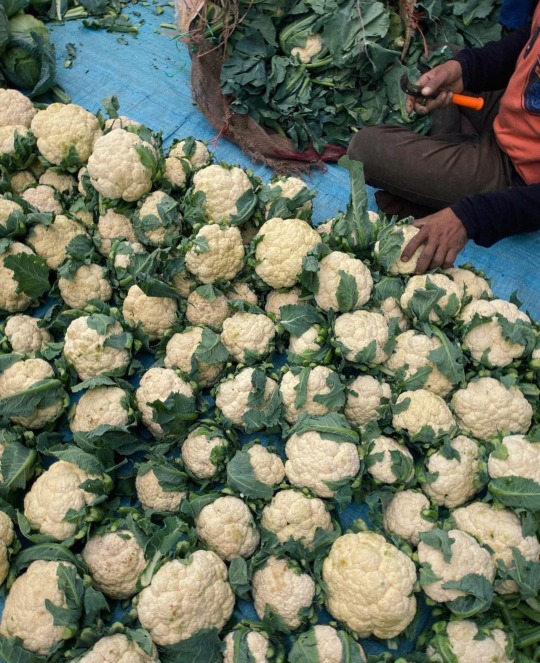
Markets of Assam by Imdad Barbhuyan
#imdad barbhuyan#assam#india#food photography#fruits#street photography#portrait photography#desi aesthetic#desi tumblr#desiblr#south asian#ph
4K notes
·
View notes
Text
We ask your questions so you don’t have to! Submit your questions to have them posted anonymously as polls.
#polls#incognito polls#anonymous#tumblr polls#tumblr users#questions#asian#asia#east asian#southeast asian#south asian#central asian#west asian#demographics#geography#polls about the world#submitted nov 4
1K notes
·
View notes
Photo




Didn’t realize I never shared this on here! Back in 2020 I tried designing what a South Asian inspired Zelda and Link would look like--it was a really fun project that I still hold dear to me.
6K notes
·
View notes
Text
Sri Lankan Fairies and Senegalese Goddesses: Mixing Mythology as a Mixed Creator
[Note: this archive ask was submitted before the Masterpost rules took effect in 2023. The ask has been abridged for clarity.]
@reydjarinkenobi asked:
Hi, I’m half Sri Lankan/half white Australian, second gen immigrant though my mum moved when she was a kid.
My main character for my story is a mixed demigod/fae. [...] Her bio mum is essentially a Scottish/Sri Lankan fairy and her other bio mum (goddess) is a goddess of my own creation, Nettamaar, who’s name is derived from [...] Wolof words [...]. The community of mages that she presided over is from the South Eastern region of Senegal [...] In the beginning years of European imperialism, the goddess basically protected them through magic and by blessing a set of triplets effectively cutting them off from the outside world for a few centuries [...]
I was unable to find a goddess that fit the story I wanted to tell [...] and also couldn’t find much information on the internet for local gods, which is why I have created my own. I know that the gods in Hinduism do sort of fit into [the story] but my Sri Lankan side is Christian and I don’t feel comfortable representing the Hindu gods in the way that I will be this goddess [...]. I wanted to know if any aspect of the community’s history is problematic as well as if I should continue looking further to try and find an African deity that matched my narrative needs?
I was also worried that having a mixed main character who’s specifically half black would present problems as I can’t truly understand the black experience. I plan on getting mixed and black sensitivity readers once I finish my drafts [...] I do take jabs at white supremacy and imperialism and I I am planning to reflect my feelings of growing up not immersed in your own culture and feeling overwhelmed with what you don’t know when you get older [...].
I’m sorry for the long ask but I don’t really have anyone to talk to about writing and I’m quite worried about my story coming across as insensitive or problematic because of cultural history that I am not educated enough in.
Reconciliation Requires Research
First off: how close is this world’s history to our own, omitting the magic? If you’re aiming for it to be essentially parallel, I would keep in mind that Senegal was affected by the spread of Islam before the Europeans arrived, and most people there are Muslim, albeit with Wolof and other influences.
About your Scottish/Sri Lankan fairy character: I’ll point you to this previous post on Magical humanoid worldbuilding, Desi fairies as well as this previous post on Characterization for South Asian-coded characters for some of our commentary on South Asian ‘fae’. Since she is also Scottish, the concept can tie back to the Celtic ideas of the fae.
However, reconciliation of both sides of her background can be tricky. Do you plan on including specific Sri Lankan mythos into her heritage? I would tread carefully with it, if you plan to do so. Not every polytheistic culture will have similar analogues that you can pull from.
To put it plainly, if you’re worried about not knowing enough of the cultural histories, seek out people who have those backgrounds and talk to them about it. Do your research thoroughly: find resources that come from those cultures and read carefully about the mythos that you plan to incorporate. Look for specificity when you reach out to sensitivity readers and try to find sources that go beyond a surface-level analysis of the cultures you’re looking to portray.
~ Abhaya
I see you are drawing on Gaelic lore for your storytelling. Abhaya has given you good links to discussions we’ve had at WWC and the potential blindspots in assuming, relative to monotheistic religions like Christianity, that all polytheistic and pluralistic lore is similar to Gaelic folklore. Fae are one kind of folklore. There are many others. Consider:
Is it compatible? Are Fae compatible with the Senegalese folklore you are utilizing?
Is it specific? What ethnic/religious groups in Senegal are you drawing from?
Is it suitable? Are there more appropriate cultures for the type of lore you wish to create?
Remember, Senegalese is a national designation, not an ethnic one, and certainly not a designation that will inform you with respect to religious traditions. But more importantly:
...Research Requires Reconciliation
My question is why choose Senegal when your own heritage offers so much room for exploration? This isn’t to say I believe a half Sri-Lankan person shouldn’t utilize Senegalese folklore in their coding or vice-versa, but, to put it bluntly, you don’t seem very comfortable with your heritage. Religions can change, but not everything cultural changes when this happens. I think your relationship with your mother’s side’s culture offers valuable insight to how to tackle the above, and I’ll explain why.
I myself am biracial and bicultural, and I had to know a lot about my own background before I was confident using other cultures in my writing. I had to understand my own identity—what elements from my background I wished to prioritize and what I wished to jettison. Only then was I able to think about how my work would resonate with a person from the relevant background, what to be mindful of, and where my blindspots would interfere.
I echo Abhaya’s recommendation for much, much more research, but also include my own personal recommendation for greater self-exploration. I strongly believe the better one knows oneself, the better they can create. It is presumptuous for me to assume, but your ask’s phrasing, the outlined plot and its themes all convey a lack of confidence in your mixed identity that may interfere with confidence when researching and world-building. I’m not saying give up on this story, but if anxiety on respectful representation is a large barrier for you at the moment, this story may be a good candidate for a personal project to keep to yourself until you feel more ready.
(See similar asker concerns here: Running Commentary: What is “ok to do” in Mixed-Culture Supernatural Fiction, here: Representing Biracial Black South American Experiences and here: Am I fetishizing my Japanese character?)
- Marika.
Start More Freely with Easy Mode
Question: Why not make a complete high-fantasy universe, with no need of establishing clear real-world parallels in the text? It gives you plenty of leg room to incorporate pluralistic, multicultural mythos + folklore into the same story without excessive sweating about historically accurate worldbuilding.
It's not a *foolproof* method; even subtly coded multicultural fantasy societies like Avatar or the Grishaverse exhibit certain harmful tropes. I also don't know if you are aiming for low vs high fantasy, or the degree of your reliance on real world culture / religion / identity cues.
But don't you think it's far easier for this fantasy project to not have the additional burden of historical accuracy in the worldbuilding? Not only because I agree with Mod Marika that perhaps you seem hesitant about the identity aspect, but because your WIP idea can include themes of othering and cultural belonging (and yes, even jabs at supremacist institutions) in an original fantasy universe too. I don't think I would mind if I saw a couple of cultural markers of a Mughal Era India-inspired society without getting a full rundown of their agricultural practices, social conventions and tax systems, lol.
Mod Abhaya has provided a few good resources about what *not* to do when drawing heavily from cultural coding. With that at hand, I don't think your project should be a problem if you simply make it an alternate universe like Etheria (She-Ra and the Princesses of Power), Inys (The Priory of the Orange Tree) or Earthsea (the Earthsea series, Ursula K. Le Guin). Mind you, we can trace the analogues to each universe, but there is a lot of freedom to maneuver as you wish when incorporating identities in original fantasy. And of course, multiple sensitivity readers are a must! Wishing you the best for the project.
- Mod Mimi
#asks#multiracial#multicultural#south asian#sri lankan#senegalese#west african#identity#representation#worldbuilding#fantasy#mythology#folklore#fairies#deities#adoption#identity issues#mixed experiences#coding
523 notes
·
View notes
Text
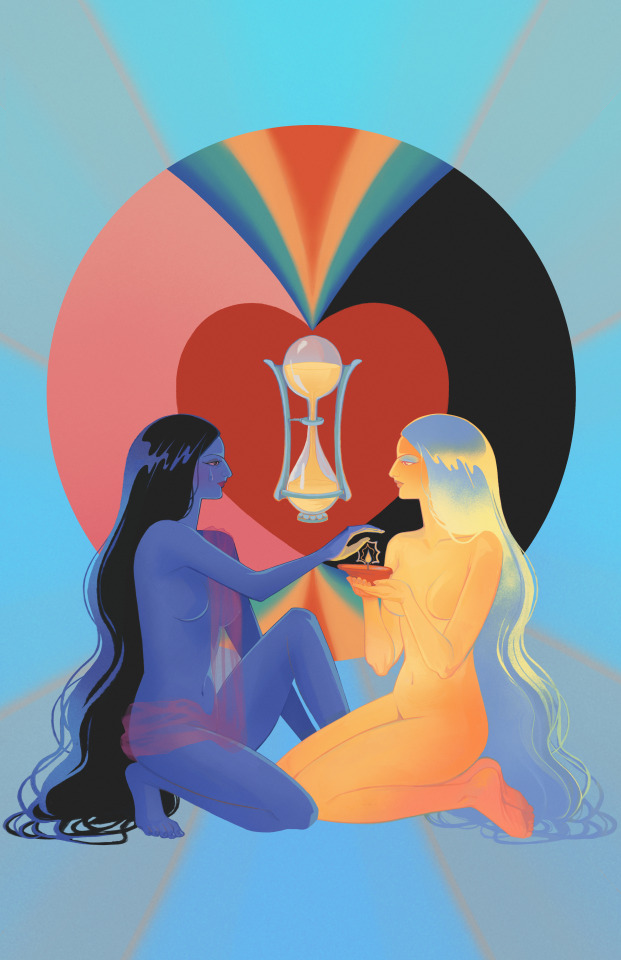
🪔دیا جلنے دو
My cover for Jasmine Zine Vol 1. A zine of LGBTQ+ South Asian art and writing.
690 notes
·
View notes
Text

why do I relate to every line
author: @jing-le-bells
#desi academia#desi things#south asian#desi dark academia#desi memes#indian aesthetic#desi aesthetic#desiblr#desi tumblr#spotify#eldest daughter#family#. darkacademia darkcottagecoreaesthetic desicottagecore cottagecoreaesthetic brownaesthetics tumblraesthetic tumblrquotes#writers on tumblr#tumblr memes#artists on tumblr
1K notes
·
View notes
Text

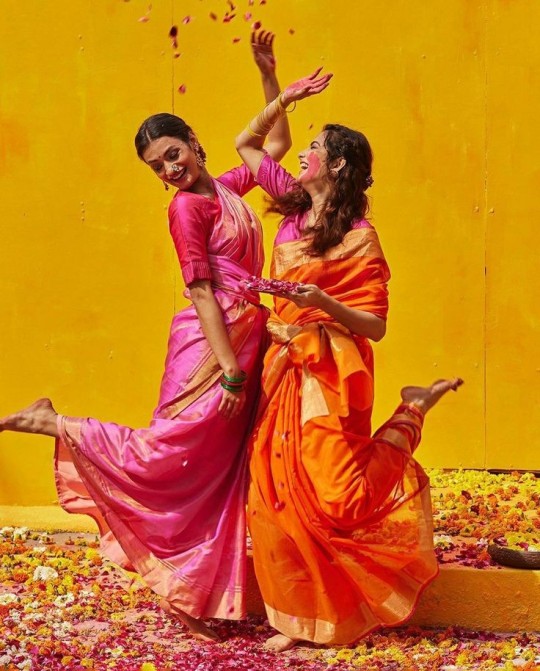
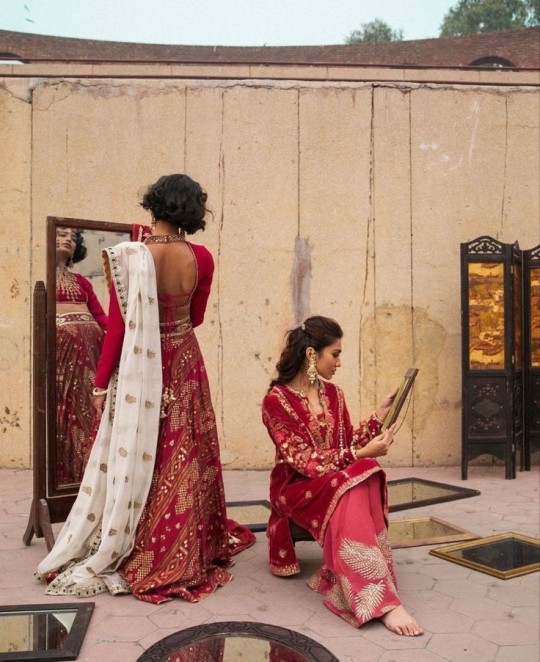
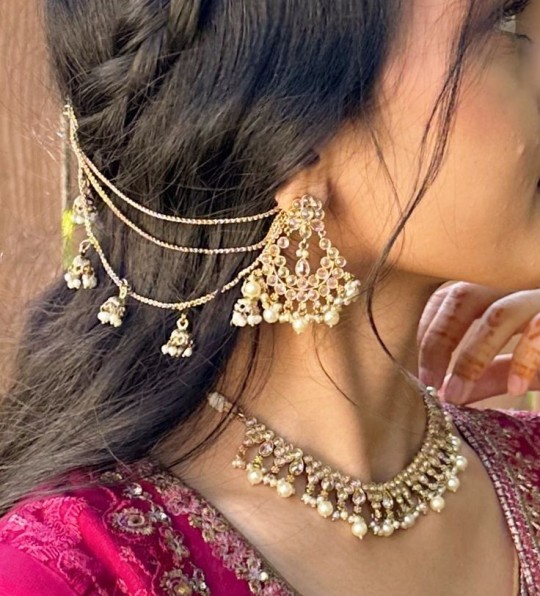




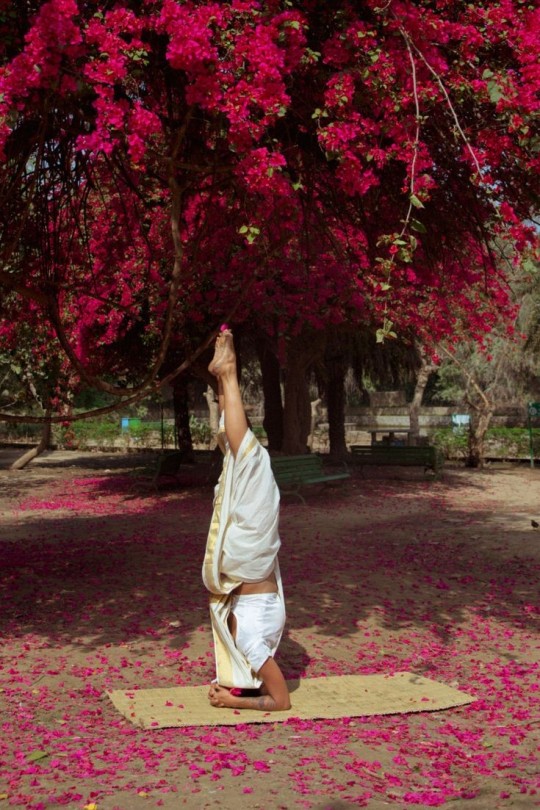
Lakshmi & Parvati core
In my eyes, Lakshmi is this soft, compassionate and lively girl who loves flowers, jewellery and the ocean and Parvati is a wild, carefree and fierce spirit who loves animals, the hills and rains.
Parvati and Lakshmi often go out together and on double date picnics with their husbands. All of them are besties. Parvati braids Shiva's hair as Lakshmi puts makeup and shringaar on her beloved Vishnu.
"Whenever you and your husband dance, it's the tandav of destruction. Whenever me and my husband dance, it's raas ~ the dance of pleasure. And the universe celebrates!" Lakshmi teased
Parvati pouted, "Let me show you REAL tandav and raas. Come HEREE" and chased Lakshmi all around the forest, giggling and catching her then swirling her around in her arms.
Shiva deep in meditation, sneakily opened an eye and whispered "What are they doing?"
"Ahh, nothing. Just enjoy the show! Want some?" Vishnu passed over some popcorn to him, "Oh, look! They're dancing now."
A playful innocence danced in Shiva's eyes "I also want to.." as he suddenly leapt up and started playing his damru, jogging towards them.
Vishnu ran after him, joining them as they all danced together and laughed.
#desi aesthetic#desiblr#desi#desi tag#desi culture#desi stuff#desi academia#desi dark academia#desi girl#just desi things#desi moodboard aesthetic#desi moodboard#hindublr#lakshmi#parvati#indian aesthetic#indian culture#south asian aesthetic#south asian#aesthetic moodboard#indian aesthetic moodboard#bhakti#desi life#desi girls#desi thoughts#hindu mythology#shiva#vishnu#mahadev#fiction
579 notes
·
View notes
Text

If only I was talented enough to do both hands 🙃
295 notes
·
View notes
Text
A kind reminder that in Mumbai there's a restaurant where reserved tables don't hold up a sign that reads "reserved" but rather a sign that reads "promised" and I think that's beautiful.
#most restaurants hold up “reserved” in Mumbai - this one's just “not like the other girls” :)#it's the little things#mumbai#india#hindi#desi#south asia#south asian#restaurant#niche things#culture#indian#bombay#desiblr#desi stuff#desi tumblr#desi things#desi love#desi tag#tfw#brown things#brown culture#brown girl
585 notes
·
View notes
Text


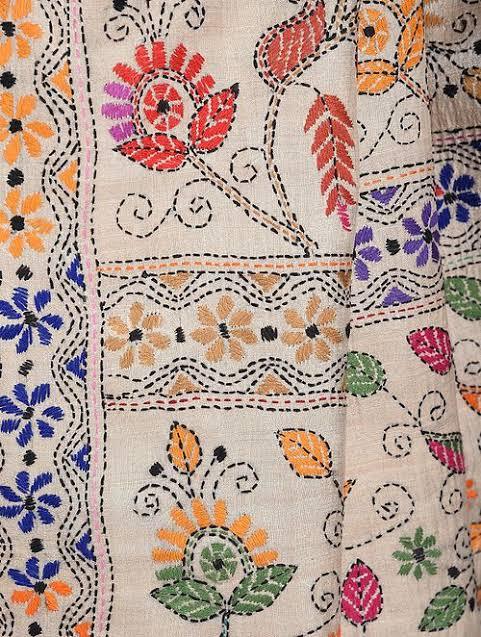




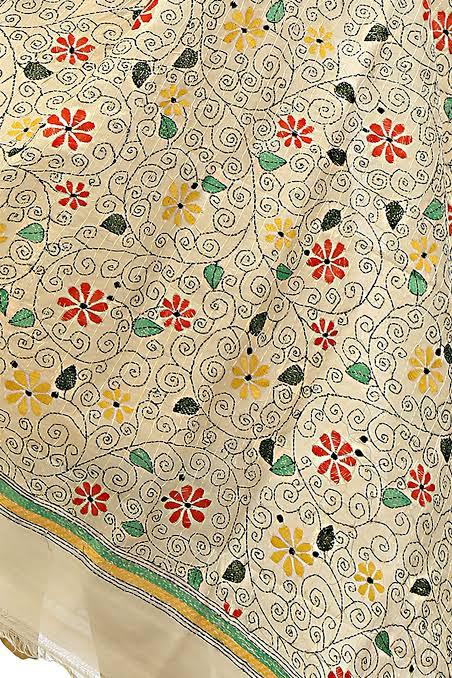

Kantha (Bengali: কাঁথা) is a form of embroidery originating in Bengal region, i.e. Bangladesh and the Indian states of West Bengal, Tripura and parts of Assam. It has its roots in nakshi kantha, an ancient practice among bengali women of making quilts from old saris and rags by sewing them together. In modern usage, kantha generally refers to the specific type of stitch used. The kantha needlework is distinct and recognised for its delicacy. The stitching on the cloth gives it a slightly wrinkled, wavy effect. Today, kantha embroidery can be found on all types of garments as well as household items like pillowcases, bags and cushions.
While it is an increasingly diversifying art form, traditional kantha embroidery motifs are still sought after. Traditional kantha embroidery is two-dimensional and are usually of two distinct types: geometric forms with a central focal point, carried over from the nakshi kantha tradition and influenced by islamic art forms; and more fluid plant, floral, animal and rural motifs with stick-figure humans depicting folklores and rural life in Bengal.
1 / 2 / 3 / 4 / 5 / 6 / 7 / 8 / 9 | textile series
#bangla tag#textiles#ots#kantha#nakshi kantha#bengal#bengali#bangladesh#india#embroidery#needlework#textile art#embroidery art#south asia#south asian
1K notes
·
View notes
Text
take some south asian!ballister headcanons
okay so ballister is, at least partially, based off of his va, Riz Ahmed, who is south asian/pakistani (like me!) and speaks Urdu (like me!), so I think I have some stuff to throw in the Headcanon Pot
when ballister was in the orphanage before he did his whole Jump The Gate Out Of Spite And Desire To Become A Knight, he primarily spoke Urdu and was in the process of learning english
also, when people learn english in countries that don't speak english, they typically learn british english, which ties in nicely to ballister's canon accent
this means that he had to learn a fair amount of english at the institute
he might've also been bullied for his questionable grammar and accent by todd and the other knights
ambrosius did his best to help in teaching ballister english and mostly helped in his grammar and vocabulary. they went through a little phase where ballister would pick up more obscure objects and ambrosius would say the english word for them.
ambrosius has only heard ballister speak urdu a handful of times, but every time it happens, he swears he falls a little more in love with him
after he was regarded as completely fluent in english, he didn't speak much urdu, but he never forgot it
post-canon, he once went on a tangent in urdu and nimona heard him and her jaw just DROPPED
"you're bilingual?? why didn't you tell me??"
"you never brought it up...?" (doesn't think it's a big deal)
she thinks it's the coolest thing ever and went through a phase where she tried to piss off ballister JUST to hear him talk in urdu
eventually, he realized what was going on and had to sit her down and explain "you don't have to do all that, all you have to do is ask and I'll talk to you in urdu."
she definitely exploited that eagerly, but she still occasionally does the whole "piss him off just to hear the rambling of Words She Doesn't Understand" for fun
ballister has absolutely no idea that both ambrosius and nimona love how he speaks urdu or he would talk way more in it
honestly I love the concept of ballister speaking urdu, but almost always when I'm speaking urdu it's for a joke, so I've kinda ruined that language for myself LMAO
also, about the south asian thing of eating pretty much everything with one's hands,
first day in the mess hall. ballister grabs the food that looks the most familiar to him- rice
sits down at a table alone and starts to eat with his hands (or is it "eat with his hand"? he's only using one hand to eat but it feels strange to have hand in singular here)
immediately todd, who was going to go pick on him anyways, notices and makes a huge deal about it
the next day, ballister did his best to work with the fork, but it was an adjustment and he stuck out like a sore thumb with his clumsiness with the utensils
when he was befriended by ambrosius, they would sit together in the mess hall
at first, ambrosius tried to help ballister become more comfortable using utensils, and ballister was eager to learn
until one day he just thinks to himself "what am I doing? the same thing as todd but nicer?"
that's when he starts sneaking meals into his room so he and ballister can eat in there together- alone, peacefully, and with whatever damn utensils (or lack thereof) they want
ballister would eat with his hands, ambrosius used chopsticks, they would chill and vibe and, when they got older, slowly fall in love (or quickly, if you're ambrosius simp goldenlion)
ballister also teaches ambrosius how to eat with his hands there, and in turn, ambrosius teaches him how to use chopsticks
they continue to eat together in that room all the way until the knighting ceremony, and it was one of their favorite routines
post-canon, the trio had rice for a meal, and nimona saw ballister eat with his hands (probably his flesh hand- even though, culturally, you're supposed to eat with your right hand, I think a prosthetic is a pretty damn good exception)
she stared in shock for a few moments, then slowly dropped her fork and attempted to mimic his motions
ballister noticed and was flattered beyond measure, and was more than happy to help her out
rice is the ONE AND ONLY thing ballister can (and is allowed to) cook, so he makes it whenever he can
and when he makes it, everyone eats it however the hell they want, society standards be damned
I have more south asian related headcanons, but this is long enough already, so I'll do a part two later! :D
-Storm
#nimona 2023#nimona#ballister boldheart#riz ahmed#ambrosius goldenloin#ballister x ambrosius#south asian#desi#don't you just love projecting your culture on cartoon men#cause I do
426 notes
·
View notes
Text
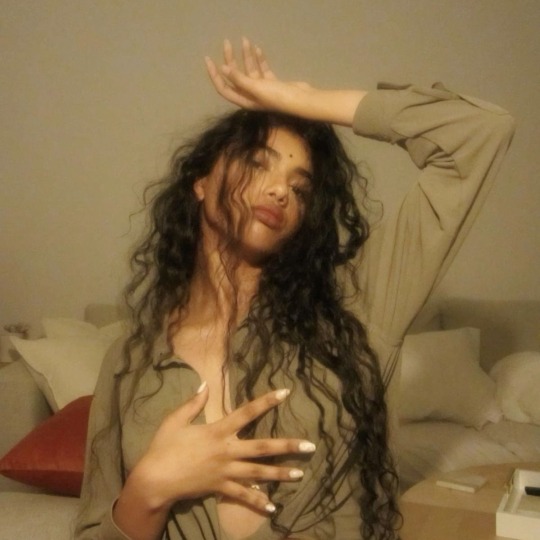

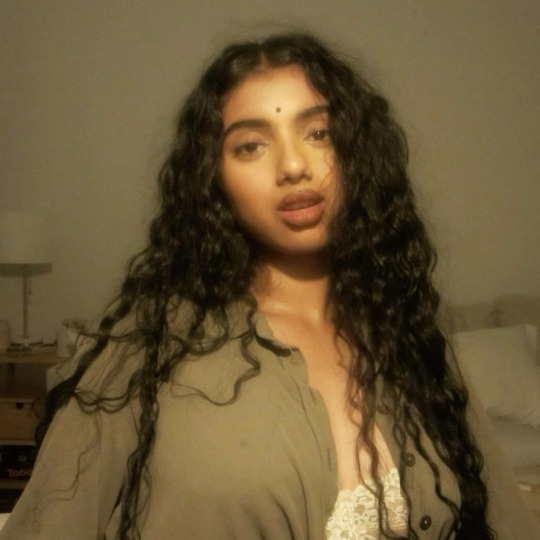

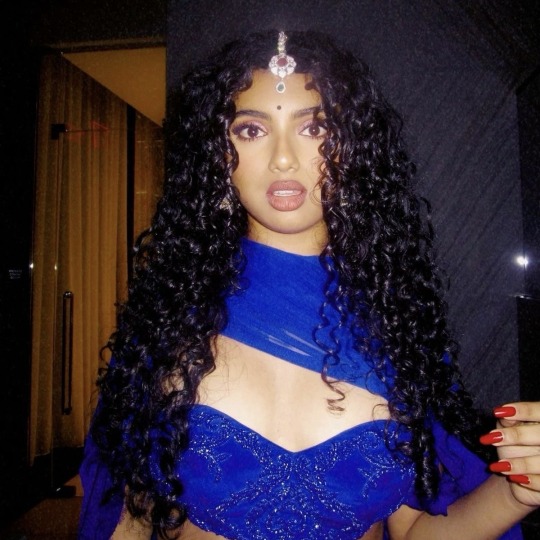




avantika vandanapu icons | like or reblog if you save
#avantika vandanapu#avantika#twitter icons#twitter layouts#icons#female icons#female#actress icons#actress#site model icons#brown women#brown women icons#south asian#mean girls#mean girls the musical#mean girls karen
197 notes
·
View notes
Text
Desi Parenthood, Adoption, and Stereotypes
I have a story set in the modern day with supernatural traces, with three characters: a young boy, his bio dad, and his adoptive dad. The boy and his bio dad are Indian, the adoptive dad is Chinese.
The bio dad is one of the few people in the story with powers. He put his son up for adoption when he was a child because at the time he was a young single father, had little control of the strength of his powers: he feared accidentally hurting his child. The son is adopted by the other dad, who holds spite to the bio dad for giving up his son since he lost his father as a young age and couldn't get why someone would willingly abandon their child.
This also results in him being overprotective and strict over his son. When the child is older, the bio dad comes to their town and the son gets closer to him, which makes the adoptive dad pissed, mostly acting hostile to the other guy, paranoid that he'll decide to take away the child he didn't help raise. Later when they get closer he does change his biases.
I can see the possible stereotypes here: the absent father being the darkskinned character, the light-skinned adoptive dad being richer than the bio dad, the lightskinned character being hostile and looking down on the darkskinned character, the overprotective asian parent, the adoptive dad assuming the bio dad abandoned the son. The reason for his bias isn't inherently racist, but I get how it can be seen that way. Is there a way to make this work? Would it be better to scrap it?
Two problem areas stand out with this ask:
You seem confused with respect to how racial stereotypes are created, and what effect they have on society.
Your characterization of the Indian father suggests a lack of familiarity with many desi cultures as they pertain to family and child-rearing.
Racial Stereotypes are Specific
Your concern seems to stem from believing the absent father trope is applied to all dark-skinned individuals, when it’s really only applied to a subset of dark-skinned people for specific historical/ social/ political reasons. The reality is stereotypes are often targeted.
The “absent father” stereotype is often applied to Black fathers, particularly in countries where chattel slavery or colonialism meant that many Black fathers were separated from their children, often by force. The "absent black father" trope today serves to enforce anti-black notions of Black men as anti-social, neglectful of their responsibilities, not nurturing, etc. Please see the WWC tag #absent black father for further reading.
Now, it’s true many desis have dark skin. There are also Black desis. I would go as far as to say despite anti-black bias and colorism in many desi cultures, if one was asked to tell many non-Black desis from places like S. India and Sri Lanka apart from Black people from places like E. Africa, the rate of failure would be quite high. However, negative stereotypes for desi fathers are not the same as negative stereotypes for non-desi Black fathers, because racially, most Black people and desis are often not perceived as being part of the same racial group by other racial groups, particularly white majorities in Western countries. Negative stereotypes for desi fathers are often things like: uncaring, socially regressive/ conservative, sexist. They are more focused around narratives that portray these men as at odds with Western culture and Western norms of parenting.
Desi Parents are Not this Way
Secondly, the setup makes little sense given how actual desi families tend to operate when one or both parents are unable to be present for whatever reason. Children are often sent to be raised by grandparents, available relatives or boarding schools (Family resources permitting). Having children be raised by an outsider is a move of last resort. You make no mention of why your protagonist’s father didn’t choose such an option. The trope of many desi family networks being incredibly large is not unfounded. Why was extended family not an option?
These two points trouble me because you have told us you are writing a story involving relationship dynamics between characters of both different races and ethnicities. I’m worried you don’t know enough about the groups you are writing about, how they are perceived by each other and society at large in order to tell the story you want to tell.
As with many instances of writing with color, your problem is not an issue of scrap versus don’t scrap. It’s being cognizant of the current limits of your knowledge. How you address this knowledge deficit and its effect on your interpretation of your characters and the story overall will determine if readers from the portrayed groups find the story compelling.
- Marika.
I have one response: what? Where are the father’s parents? Any siblings? Is he cut off? Is he American? A Desi that has stayed in India?
Estrangement is not completely out of the question if the father is Westernized; goodness knows that I have personal experience with seeing estrangement. But you haven’t established any of that. What will you add?
-Jaya
#Black#Indian#South Asian#Desi#absent black father#stereotypes#tropes#adoption#colorism#research research research#parenting#strict Asian parents#Asian families
470 notes
·
View notes
Text
can we just take a second to appreciate Aryan Simhadri? he's a fantastic actor, every second he's on the screen he manages to make his actions scream GROVER. he's perfect for his role just like Leah and Walker are yet I don't see nearly enough people talking about him and his contribution to the show in this fandom. he's not only nailing the Grover Underwood vibe but he's also providing so much phenomenal Indian/Asian rep. he's giving so much depth of character and that is so rare for Indians (and Asians generally) in popular media, and he's so conscious of how his background interacts with Grover's. Aryan has given so so much to us and now I wanna hear y'all celebrating that.
#aryan simhadri#grover underwood#pjo#pjo series#pjo tv show#pjo fandom#walker scobell#leah sava jeffries#percy jackson#percy jackon and the olympians#annabeth chase#asian representation#desiblr#indian representation#south asian#my post
179 notes
·
View notes